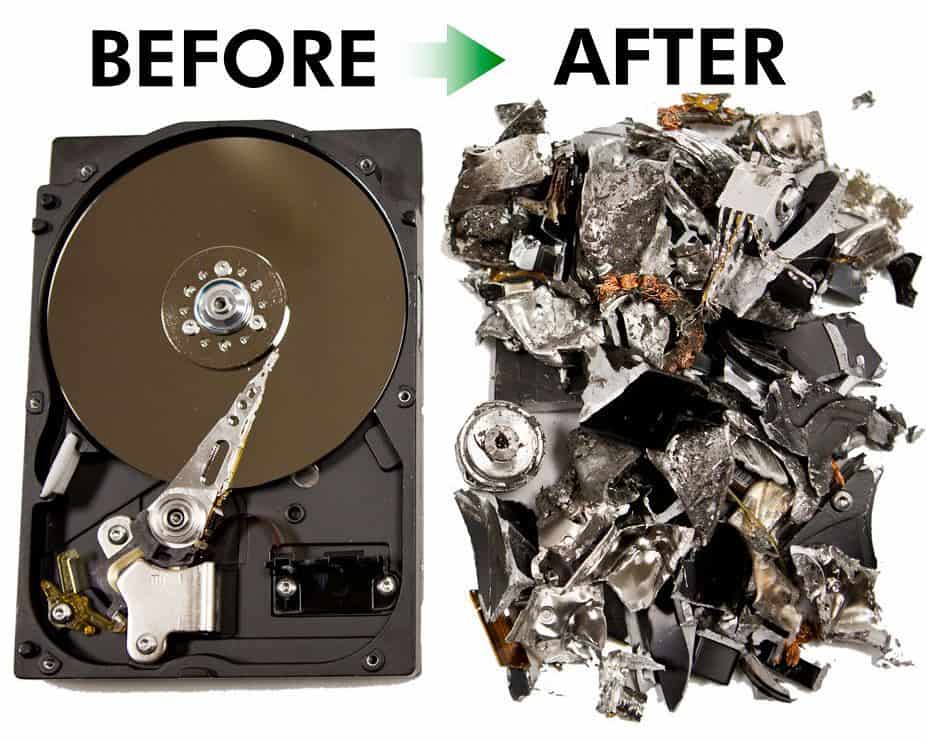Data Destruction Solutions: A Key Element in Your Cyber Security Technique
Data Destruction Solutions: A Key Element in Your Cyber Security Technique
Blog Article
The Relevance of Effective Data Devastation Practices in Safeguarding Sensitive Details and Ensuring Computer Protection
In an age where information breaches are increasingly usual, the significance of efficient information destruction methods can not be overemphasized. Organizations face significant dangers when delicate info is improperly dealt with, possibly resulting in unapproved accessibility and serious economic consequences. Implementing durable data destruction techniques not only minimizes these risks however likewise aligns with lawful compliance requirements, ensuring that companies maintain their online reputation and foster client count on. However, the question remains: what details techniques can be utilized to improve these methods, and exactly how can companies successfully integrate them right into their total cybersecurity framework?
Comprehending Data Devastation
Comprehending data devastation is vital in today's digital landscape, where delicate information can conveniently be jeopardized. Effective data destruction entails not simply making sure but erasing data that information is irretrievable through extensive approaches. This process is vital for organizations that take care of confidential customer info, intellectual residential property, or internal papers, as any kind of breach can cause severe financial and reputational repercussions.
Data devastation incorporates numerous methods, consisting of shredding physical media, degaussing magnetic storage space gadgets, and utilizing software-based options that overwrite data multiple times. Each technique offers a details purpose and must line up with the sensitivity of the info being dealt with. As an example, physical devastation is typically chosen for hard disks including highly personal data, while software techniques may be sufficient for less sensitive info.
Moreover, sticking to industry standards and laws, such as the General Information Defense Regulation (GDPR) or the Wellness Insurance Coverage Portability and Accountability Act (HIPAA), is crucial for compliance and to reduce legal threats. Organizations needs to create a robust information damage policy, train workers on finest techniques, and consistently examine their procedures to make certain that all sensitive info is taken care of firmly and efficiently.
Threats of Inadequate Practices
Insufficient data devastation techniques expose companies to substantial dangers that can have far-ranging consequences. When delicate info is not effectively taken care of, it remains prone to unauthorized access, which can result in information violations and identification burglary. Such incidents not only endanger the safety and security of people however likewise stain the organization's credibility, causing a loss of customer trust and possible economic effects.
Moreover, governing conformity is progressively stringent in lots of markets. Failing to adhere to information damage guidelines can result in hefty fines and lawful actions against companies. These charges can strain funds and divert focus from core service operations.
In enhancement, the misuse of recurring data can bring about intellectual residential or commercial property burglary or company reconnaissance, threatening competitive benefits (data destruction). The impact of insufficient information damage expands past instant financial losses; it can additionally result in lasting damages to brand name stability and market placement

Organizations should identify that data protection is not solely about avoiding breaches; it likewise encompasses the accountable management of information throughout its lifecycle. Ignoring reliable information destruction methods can have catastrophic ramifications, highlighting the necessity for robust steps to alleviate these risks.
Finest Practices for Data Destruction
Applying efficient information damage practices is important for guarding delicate details and maintaining compliance with governing criteria. Organizations needs to embrace a multi-faceted method to guarantee that data is irretrievable, thereby stopping unapproved access and possible breaches.
First, data need to be categorized based upon level of sensitivity, permitting organizations to apply ideal damage methods tailored to the level of threat. For electronic data, using software-based data-wiping tools that conform with industry standards can efficiently overwrite existing information. Physical devastation methods, such as shredding or degaussing, are crucial for tools that keep delicate information, making sure full obliteration.
Establishing a clear information retention policy is essential, detailing the length of time various sorts of info should be preserved before devastation. Routine audits of data storage space systems are also essential to identify unnecessary or obsolete information requiring removal.
In addition, training employees on the significance of data damage and the certain procedures to comply with fosters a culture of safety within the company. Keeping documents of information devastation processes provides accountability and sustains compliance with exterior laws and internal plans. By sticking to these ideal practices, companies can significantly mitigate the dangers related to information exposure.
Legal and Compliance Factors To Consider

Failure to adhere to these guidelines can lead to serious penalties, including significant fines and reputational damage. Organizations needs to implement a durable information devastation policy that straightens with these lawful structures and gives clear standards on the proper techniques of information disposal, whether physical shredding or electronic cleaning.
Additionally, preserving documents of Visit Website data damage tasks is necessary for demonstrating compliance during audits or assessments. By prioritizing legal and compliance considerations, companies can enhance their data protection pose and foster depend on with clients and stakeholders, ultimately adding to a much more protected data management environment.
Advantages of Effective Data Damage
Reliable data devastation methods extend past simple compliance; they use significant benefits to companies that prioritize them. By ensuring that delicate info is irretrievably damaged, companies minimize the threat of information breaches and the possible monetary repercussions connected with them. This aggressive approach not just safeguards versus unauthorized access yet likewise enhances the total reliability of the organization in the eyes of stakeholders and clients.
Carrying out robust data destruction methods, such as physical devastation of storage tools or advanced information cleaning methods, contributes to the strengthening of an organization's cybersecurity pose. data destruction. It reduces the possibility of copyright burglary and shields proprietary details, therefore keeping an one-upmanship in the marketplace

Conclusion
In conclusion, effective information devastation techniques are crucial for guarding sensitive information and improving total computer system protection. By applying thorough techniques such as shredding, software application, and degaussing overwriting, companies can reduce the threats associated with unapproved access and information violations. Adherence to governing criteria, including GDPR and HIPAA, further enhances compliance and protects against lawful repercussions. Ultimately, a dedication to durable information destruction approaches cultivates a culture of responsibility, thereby enhancing a company's cybersecurity stance and keeping customer count on.

Report this page